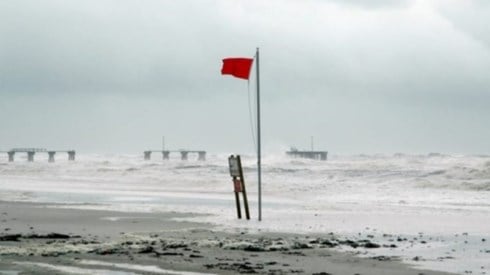2022 Global Insured Natural Disaster Losses Likely To Top $100 Billion

October 24, 2022

Global insured losses resulting from natural disasters are likely to exceed $100 billion for the third consecutive year, according to a recent report from Aon.
In its Q3 Global Catastrophe Recap, Aon notes that preliminary global natural disaster losses through the end of the third quarter of 2022 were close to the average compared to the 21st century baseline. Aggregated losses sustained by the insurance sector are likely to exceed averages over the periods from both 2000 and 2012, however, and are likely to approach the average of the past 5 years, Aon says.
Preliminary year-to-date economic losses, including a first look at Hurricane Ian losses based on publicly available estimates, were $227 billion, according to the October 18, 2022, Aon report. Of that amount, approximately $99 billion is expected to be covered by private insurers, Aon says.
Much will depend on the eventual financial outcome of Hurricane Ian, the report notes. Initial estimates project insured losses from the September hurricane will be in the tens of billions of dollars.
Indeed, risk modeling firm RMS estimated Hurricane Ian insured losses at $53 billion to $74 billion, with a best estimate of $67 billion. Others have offered their own ranges of loss estimates, including an estimate of $35 billion to $55 billion from Fitch Ratings.
Whatever the ultimate insured loss from Hurricane Ian, the final figure likely won't be resolved for some time, the Aon report says. "This type of loss development is standard and expected in the aftermath of larger scale events," the report says.
The Aon report notes that though secondary perils such as severe convective storms or floods were the main source of natural disaster losses during the first half of the year, losses from primary perils accelerated in the third quarter due to tropical cyclone activity in the Atlantic and the Western Pacific oceans. Hurricane Ian is expected to be the year's costliest single weather event, the report says, and could prove to be one of the costliest insured loss events ever globally.
The Aon report says Hurricane Ian will strain Florida's insurers, with much of the loss resulting from the widespread wind-related damage across the peninsula, most of which was concentrated in counties in the western and central parts of the state. "It is noteworthy that many of the properties impacted by hurricane-force winds were also affected by Hurricane Irma in 2017," the report says.
Additional losses are expected to result from the catastrophic storm surge on Florida's western coast, as well as inland flooding caused by heavy rainfall, Aon says.
"Even though the inland precipitation-induced flooding in Florida might have gotten less attention, losses from this subperil were not negligible," the report says. "Moreover, most of the damage occurred in inland counties, which generally have lower (National Flood Insurance Program) take-up rates and most of the damage will thus not be covered by insurance. This is in contrast with the coastal counties affected by storm surge, which generally have above-average flood coverage."
The United States experienced the highest percentage of year-to-date natural disaster losses at $114 billion, the report says, followed by the Asia-Pacific (APAC) region with $56 billion and the Europe, the Middle East, and Africa (EMEA) region with $42 billion. The losses in the United States and EMEA were above average, Aon said, while the APAC region experienced below-average losses.
"It is anticipated that there will be robust loss development especially with the realization of cost(s) associated with late tropical cyclone development worldwide," the Aon report says. "Recurring La Niña conditions and the likelihood of above normal hurricane activity can potentially trigger impactful events in the remaining quarter, with additional costs arising from inflationary pressure."
According to Aon, the first half of this year's third quarter was marked by extreme heat and drought conditions across large portions of Europe and China as both regions experienced extended summers. Meanwhile, the last month of the quarter saw intense tropical cyclones, including Hurricanes Ian and Fiona in the Atlantic and Super Typhoons Noru and Nanmadol in the Western Pacific.
Parts of Europe saw severe drought conditions, amplified by record heat during the summer, Aon says. Those conditions resulted in substantial agricultural losses and thousands of heat-related deaths. The weather pattern also created favorable conditions for wildfire development.
Europe experienced two major heat waves, one in mid-June and the other in mid-July, Aon says. Those heat waves affected hundreds of millions of people, particularly in western, southern, and central Europe. Based on excess mortality data, the mid-June heat wave resulted in at least 3,700 deaths, Aon says, while more than 13,000 people died as a result of the July event.
While calculations of drought-related losses across Europe continue, to date losses to agriculture, buildings, and infrastructure in Spain, Italy, France, and Hungary are estimated in the billions of dollars. Together with drought losses elsewhere on the continent, losses from this year's European drought are expected to reach $19 billion, making it the second costliest drought in Europe, following a 2003 drought that affected much of Europe, resulting in $26 billion in economic losses.
In addition to the heat waves and drought, Europe also experienced a significant increase in wildfires this year, Aon says, with cumulative acres burned exceeding the long-term average.
October 24, 2022




